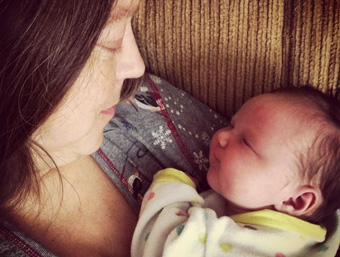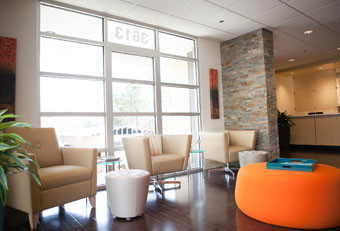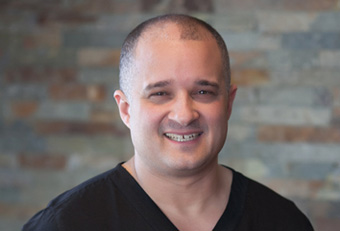The tubal reversal doctors at A Personal Choice are specialists in fallopian tube repair. Although most of patients come to A Personal Choice for tubal ligation reversal, others come for fallopian tube repair after a tubal infection or pelvic inflammatory disease (PID), ectopic pregnancy, or previous surgery involving the fallopian tubes.
Fallopian Tube Anatomy
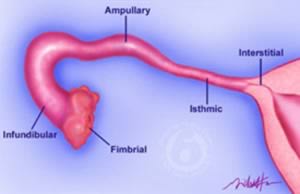 The fallopian tube begins within the muscular wall of the uterus (interstitial segment), leads away from the uterine wall (isthmic segment), becomes wider (ampulla), extends to the widest area near the end of the tube (infundibulum), and ends next to the ovary (fimbrial segment).
The fallopian tube begins within the muscular wall of the uterus (interstitial segment), leads away from the uterine wall (isthmic segment), becomes wider (ampulla), extends to the widest area near the end of the tube (infundibulum), and ends next to the ovary (fimbrial segment).
The fallopian tube has several important functions that include:
- Capturing the egg at ovulation
- Providing the proper environment for fertilization
- Transporting the fertilized egg to the uterine cavity
When fallopian tubes have become damaged, pregnancy difficult and sometimes impossible to achieve.
Fallopian Tube Disease
When a fallopian tube is damaged and completely closed, sperm cannot reach an egg to fertilize it, and the egg cannot reach the uterine cavity. Common causes of fallopian tube damage are:
- Pelvic inflammatory disease (PID)
- Other abdominal infections
- Ectopic pregnancy
- Prior pelvic surgery
Diagnosing Fallopian Tube Disorders
The possibility of fallopian tube damage should be suspected when a woman is either unable to become pregnant or has a history of multiple ectopic pregnancies. The diagnosis of a damaged fallopian tube usually is made from an x-ray procedure called a hysterosalpingogram (HSG). During an HSG, a radio-opaque dye is placed into the cavity of the uterus and pictures are taken as the dye flows into the fallopian tube. If the dye does not travel freely from the uterine cavity and through the fallopian tube into the abdominal cavity, then fallopian tube damage is suspected.
Fallopian Tube Repair
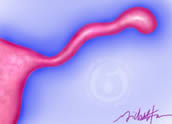 Fallopian tube damage due to infection of the tube may result in a swollen, club-shaped tube called a hydrosalpinx. In this situation, the fimbrial end of the tube is closed by scar tissue. This is easily diagnosed by a HSG when the dye is seen to fill the fallopian tube but becomes trapped within it at its swollen fimbrial end. This is the most common type of tubal disease that results in patients seeking fallopian tube repair.
Fallopian tube damage due to infection of the tube may result in a swollen, club-shaped tube called a hydrosalpinx. In this situation, the fimbrial end of the tube is closed by scar tissue. This is easily diagnosed by a HSG when the dye is seen to fill the fallopian tube but becomes trapped within it at its swollen fimbrial end. This is the most common type of tubal disease that results in patients seeking fallopian tube repair.
Repairing Hydrosalpinx
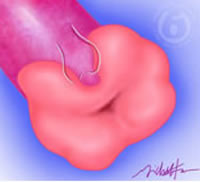 A hydrosalpinx can be repaired by the technique of microsurgical salpingostomy. In this procedure, the fimbrial end of the fallopian tube is opened and folded back where it is sutured in place to keep the tube open. Any scar tissue responsible for closing the end of the tube is removed. Pregnancy success rates after microsurgical salpingostomy are approximately 40%. There is an increased risk of ectopic pregnancy after repair of a hydrosalpinx, particularly if the internal lining of the tube has been damaged extensively. It is the internal lining, rich in cilia, that help move the egg down the tube to arrive in the uterine cavity.
A hydrosalpinx can be repaired by the technique of microsurgical salpingostomy. In this procedure, the fimbrial end of the fallopian tube is opened and folded back where it is sutured in place to keep the tube open. Any scar tissue responsible for closing the end of the tube is removed. Pregnancy success rates after microsurgical salpingostomy are approximately 40%. There is an increased risk of ectopic pregnancy after repair of a hydrosalpinx, particularly if the internal lining of the tube has been damaged extensively. It is the internal lining, rich in cilia, that help move the egg down the tube to arrive in the uterine cavity.
Fallopian Tube Repair at A Personal Choice
The tubal reversal doctors at A Personal Choice, Dr. Gary Berger and Dr. Charles Monteith, are reproductive surgeons who are specialists in tubal ligation reversal and fallopian tube repair. They perform more than 800 tubal reparative surgeries each year for women from thoughout the United States and around the world. Their vast experience in repairing fallopian tubes allows women with fallopian tube damage to become pregnant naturally as opposed to the more expensive and complicated treatment of in vitro fertilization.
More Information on Fallopian Tube Repair


